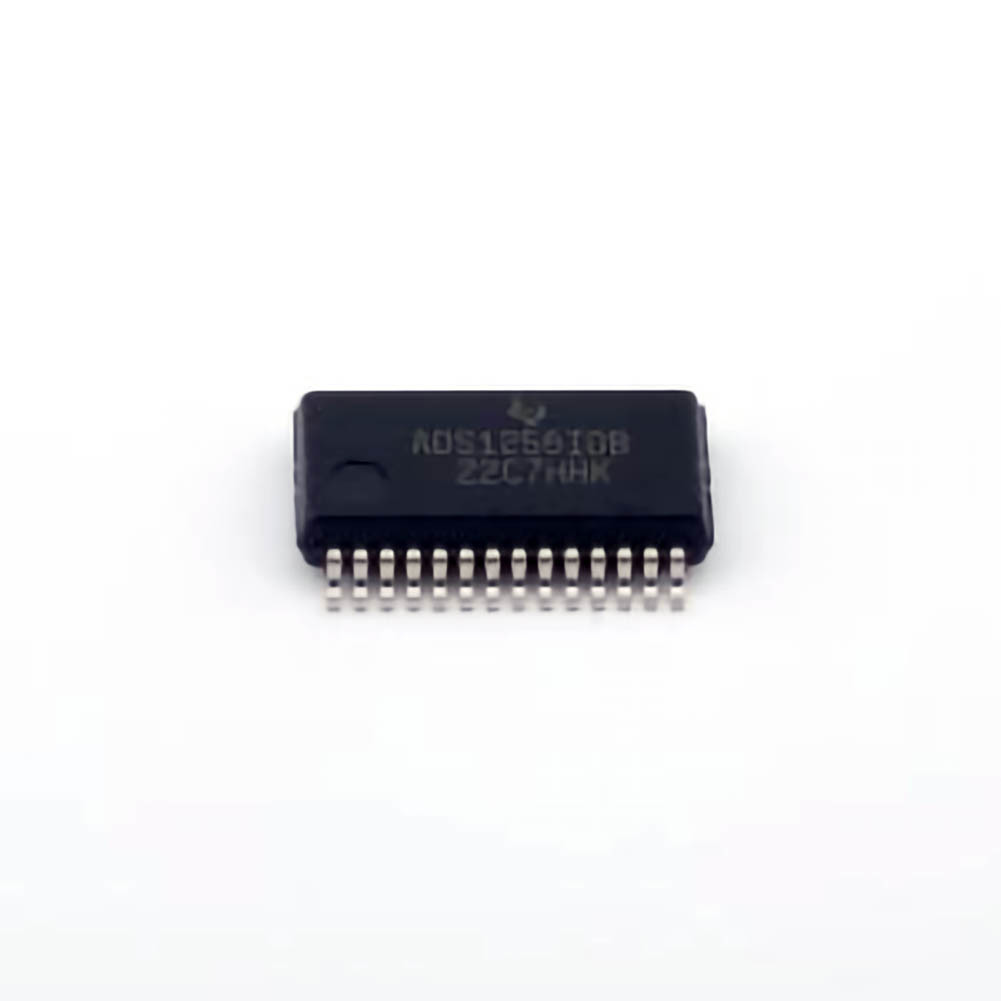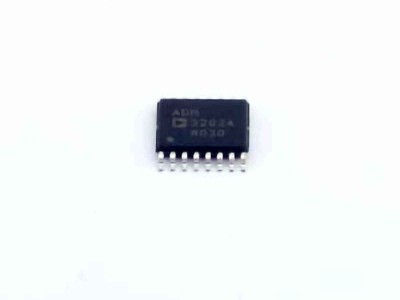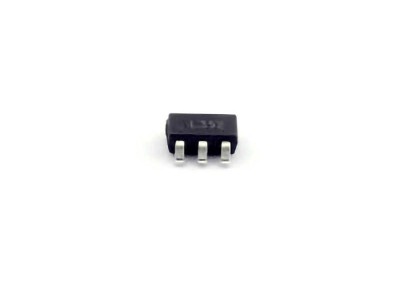
This article explores the applications and performance of the ADS1256IDBR , a high-precision analog-to-digital converter (ADC), in Data Acquisition systems. Through in-depth analysis, it provides insights into its capabilities, advantages, and suitability for a range of industrial, scientific, and commercial applications. Emphasizing its performance characteristics, this article highlights the impact of ADS1256IDBR in high-resolution measurement systems.
ADS1256IDBR, high-precision data acquisition, ADC, performance analysis, analog-to-digital conversion, data acquisition systems, precision measurement, industrial applications, signal processing, resolution, noise reduction.
Introduction to ADS1256IDBR and Its Role in Data Acquisition Systems
In the modern world, precise and reliable data acquisition is essential for a wide range of applications, from industrial process control to scientific research and medical Instrumentation . The need for high-precision measurement systems has led to the development of advanced analog-to-digital converters (ADCs) like the ADS1256IDBR. This component, manufactured by Texas Instruments, is designed to provide excellent performance in converting analog signals to digital data with a high degree of accuracy, resolution, and low noise.
What is the ADS1256IDBR?
The ADS1256IDBR is a high-precision, 24-bit ADC that offers a data rate of up to 30kSPS (samples per second). It is widely used in applications requiring very high accuracy and resolution in measuring small signals, such as instrumentation, process monitoring, and medical diagnostics. With its integrated features, the ADS1256IDBR is capable of converting differential or single-ended analog input signals into corresponding 24-bit digital outputs, making it ideal for high-precision data acquisition tasks.
What sets the ADS1256IDBR apart from other ADCs is its ultra-low noise performance and high resolution, which allows it to capture signals with remarkable precision even in environments with minimal signal strength or significant electrical noise. This makes it particularly useful in scenarios where maintaining signal integrity is crucial, such as in precision testing equipment or environmental monitoring systems.
Key Features and Specifications of the ADS1256IDBR
The ADS1256IDBR boasts several important features that contribute to its exceptional performance:
24-Bit Resolution: The ADC offers an impressive 24-bit resolution, enabling it to capture even the most subtle variations in an input signal.
Low Noise and High Accuracy: With an input noise of just 0.3µV (typical), the ADS1256IDBR is capable of offering highly accurate readings, even from very low-level signals.
Selectable Data Rates: The device supports various data rates, ranging from 2.5SPS to 30kSPS, providing flexibility for different application requirements.
Differential and Single-Ended Inputs: The device can handle both differential and single-ended input signals, making it versatile in terms of input configuration.
Programmable Gain Amplifier (PGA): The built-in PGA allows for adjustable gain, enabling users to optimize signal amplification according to their specific needs.
Low Power Consumption: The device operates efficiently with low power consumption, making it suitable for battery-powered applications.
Integrated Digital Filter: The ADC includes an integrated digital filter, which helps eliminate unwanted noise from the signal, improving the overall accuracy of measurements.
Applications of the ADS1256IDBR
The ADS1256IDBR is highly versatile and can be found in numerous applications across various industries. Below are some key sectors where this ADC excels:
Medical Instrumentation: In medical devices such as electrocardiograms (ECGs) and electroencephalograms (EEGs), precise measurements are critical for accurate diagnosis and patient monitoring. The ADS1256IDBR’s low noise and high resolution make it ideal for acquiring small bioelectric signals.
Industrial Process Control: Industrial automation and monitoring systems require precise and accurate measurements of physical parameters like pressure, temperature, and humidity. The ADS1256IDBR’s ability to handle high-resolution data acquisition with low error margins makes it an excellent choice for these applications.
Scientific Research: Researchers rely on highly accurate measurements for experiments and testing. The ADS1256IDBR is used in labs for applications such as spectroscopy, particle detection, and environmental monitoring, where capturing minute variations in signals is essential.
Test and Measurement: The ADS1256IDBR is commonly used in electronic test equipment, such as oscilloscopes and signal analyzers, where precision measurement is paramount. It allows for detailed analysis of electrical signals in a variety of testing scenarios.
Challenges in High-Precision Data Acquisition
While the ADS1256IDBR is an outstanding ADC, high-precision data acquisition comes with its own set of challenges. One of the most significant obstacles is maintaining signal integrity. In many real-world scenarios, the analog signals being measured are subject to noise and interference, which can degrade the quality of the measurement. In these cases, the ADC's ability to reject noise and maintain high accuracy becomes critically important. The ADS1256IDBR's low-noise architecture and advanced filtering capabilities address these issues effectively, ensuring that even in noisy environments, the data captured is clean and accurate.
Another challenge in high-precision ADCs is ensuring proper calibration and temperature compensation. Variations in temperature can lead to drifts in the measurement, which could introduce errors. The ADS1256IDBR mitigates this with internal temperature sensors and calibration features, ensuring long-term accuracy across a wide range of environmental conditions.
Performance Analysis and Practical Considerations
While the ADS1256IDBR is known for its exceptional specifications, understanding how it performs in real-world applications is equally important for engineers and designers. This section takes a deeper look into the performance characteristics of the ADS1256IDBR, addressing its noise performance, resolution, speed, and power consumption, and providing practical considerations for optimizing its use in various systems.
Noise Performance and Signal Integrity
One of the standout features of the ADS1256IDBR is its ability to minimize noise, which is a common issue in precision data acquisition. The ADC’s noise performance is characterized by its low Equivalent Input Noise (EIN) and high Signal-to-Noise Ratio (SNR). The low noise helps ensure that weak signals, often drowned out by background noise in less capable ADCs, can still be detected and accurately measured.
The device’s integrated digital filters contribute to its noise reduction capabilities. The filters can be configured to remove unwanted high-frequency noise, which is essential when dealing with small signals in noisy environments. For example, in industrial applications where electrical noise from motors or other heavy machinery may interfere with sensitive measurements, the ADS1256IDBR’s ability to filter out this noise ensures that only the relevant data is captured.
Resolution and Accuracy in High-Precision Systems
The 24-bit resolution of the ADS1256IDBR allows it to capture even the smallest voltage changes, providing high-precision readings for a wide range of applications. In applications such as environmental monitoring or scientific research, where the goal is to measure tiny variations in temperature or pressure, this level of resolution is critical.
However, it’s important to note that the actual effective resolution in a system may be impacted by external factors, including noise, power supply quality, and the layout of the circuit. For maximum performance, it’s essential to carefully design the signal conditioning circuitry, including proper grounding, shielding, and the use of precision amplifiers.
Data Rate and Throughput Considerations
While the ADS1256IDBR offers a flexible data rate ranging from 2.5SPS to 30kSPS, the choice of data rate will depend on the application requirements. For high-speed applications, such as real-time monitoring of dynamic signals, higher data rates may be required. However, higher speeds may also introduce additional noise or reduce the accuracy of the measurement. In contrast, lower data rates typically offer higher resolution and greater accuracy, making them suitable for static or low-speed applications, such as laboratory experiments.
Understanding the trade-off between speed and accuracy is key when configuring the ADS1256IDBR for a particular application. For example, in industrial process monitoring, where rapid changes in the process need to be tracked in real-time, the ability to sample data quickly without compromising too much on resolution is essential. Conversely, in medical instrumentation, where accuracy and low noise are paramount, slower data rates with maximum resolution are preferred.
Power Consumption and Efficiency
Power consumption is a critical consideration, especially in battery-operated or low-power applications. The ADS1256IDBR has been designed with low power consumption in mind, which makes it well-suited for portable or remote monitoring systems. The device operates in various power modes, allowing users to balance power consumption and performance according to the system's needs.
For instance, in battery-powered sensor nodes used for environmental monitoring, the ability to put the ADS1256IDBR into a low-power mode when not actively sampling can significantly extend the operational life of the battery. This feature makes the device an excellent choice for applications requiring extended periods of autonomous operation without the need for frequent battery replacements.
Practical Considerations in System Integration
When integrating the ADS1256IDBR into a larger system, there are several practical considerations to ensure optimal performance. Proper signal conditioning, including the use of low-noise amplifiers and filters, is essential to preserve the integrity of the analog signal before it reaches the ADC. Additionally, careful attention must be paid to the power supply, as fluctuations in the supply voltage can introduce errors or noise into the system.
The physical layout of the PCB is another important factor. Minimizing trace lengths, using a solid ground plane, and carefully routing high-speed signals can help reduce parasitic noise and ensure that the ADC operates at its full potential. Using precision external components, such as low-noise op-amps and voltage references, will further enhance the overall accuracy and reliability of the system.
Conclusion
The ADS1256IDBR represents a powerful tool for high-precision data acquisition in a wide variety of applications. Its 24-bit resolution, low noise performance, and flexible data rates make it an ideal choice for industries that require highly accurate and reliable measurements. Whether used in medical instrumentation, industrial process control, or scientific research, the ADS1256IDBR delivers the performance needed to meet the demands of the most critical systems.
By understanding the key features, performance characteristics, and practical considerations involved in utilizing the ADS1256IDBR, engineers and designers can fully leverage its capabilities to achieve precise, high-quality data acquisition in their applications. The future of high-precision measurement looks bright with the ADS1256IDBR leading the way.
If you are looking for more information on commonly used Electronic Components Models or about Electronic Components Product Catalog datasheets, compile all purchasing and CAD information into one place.


